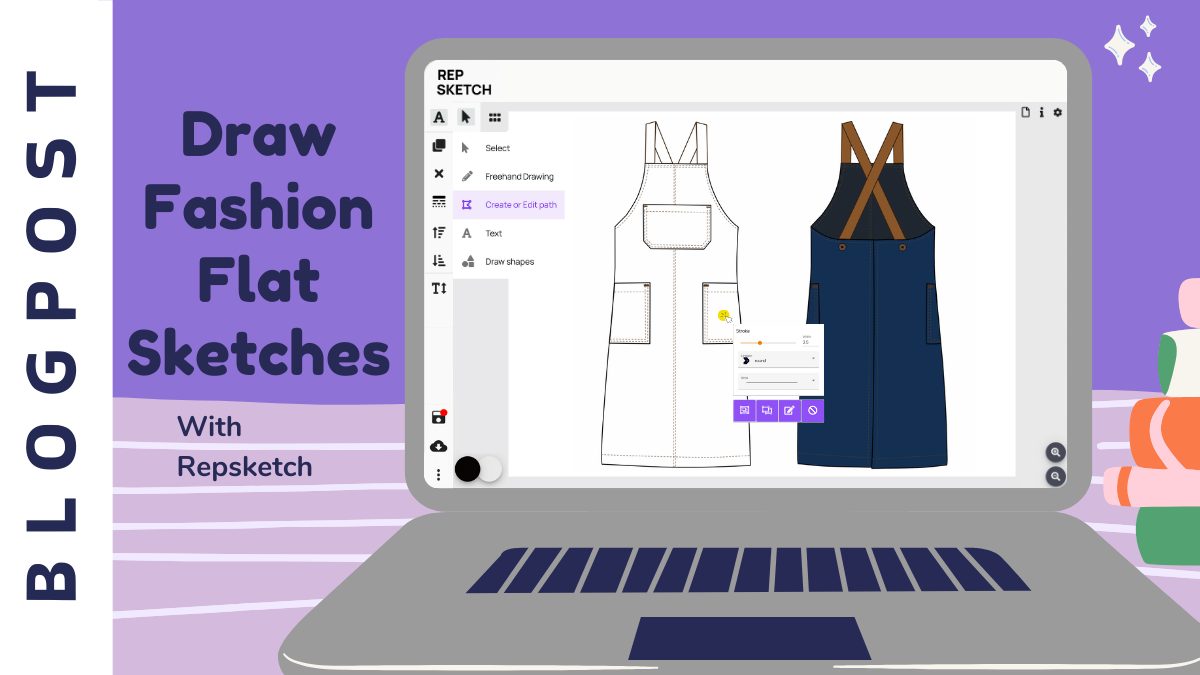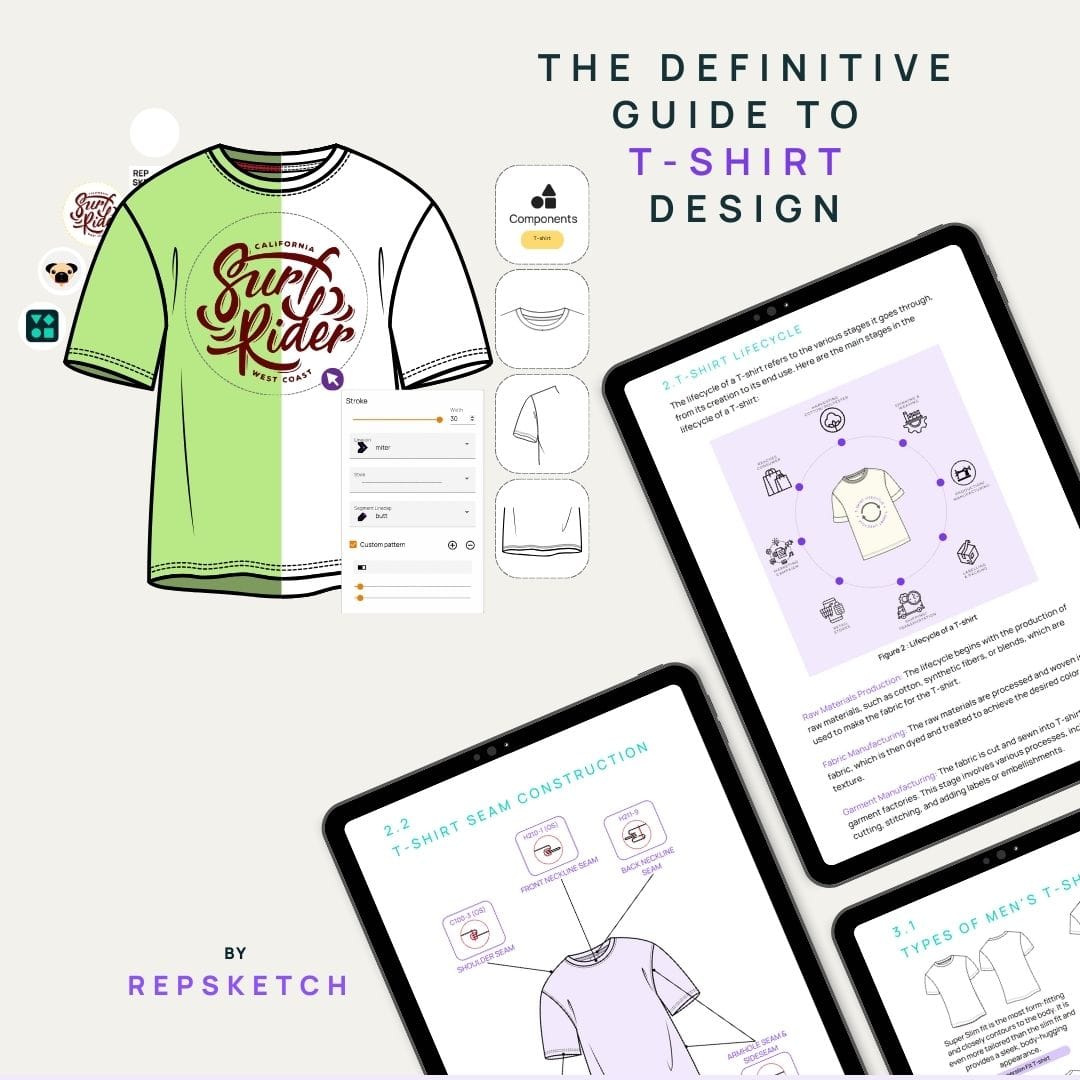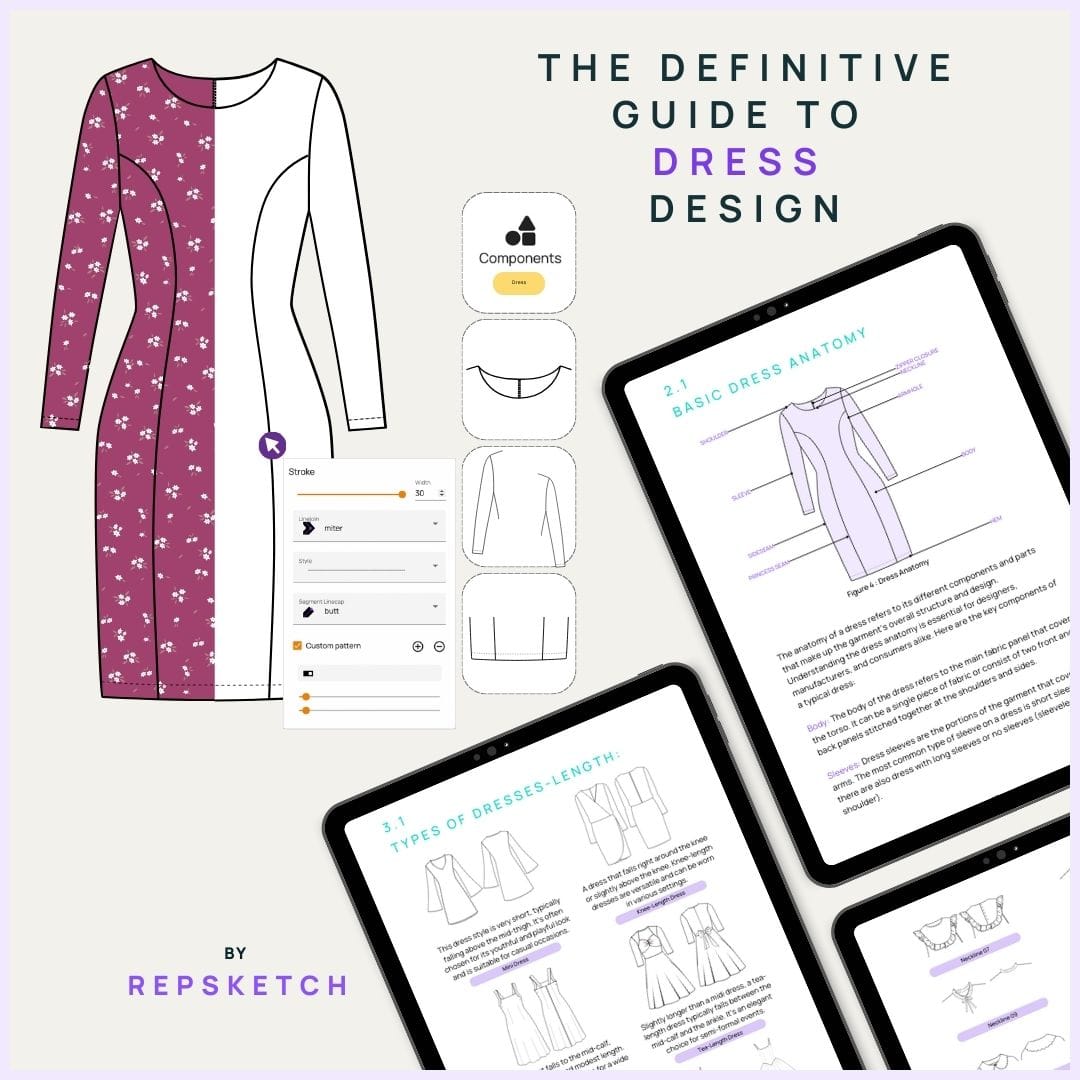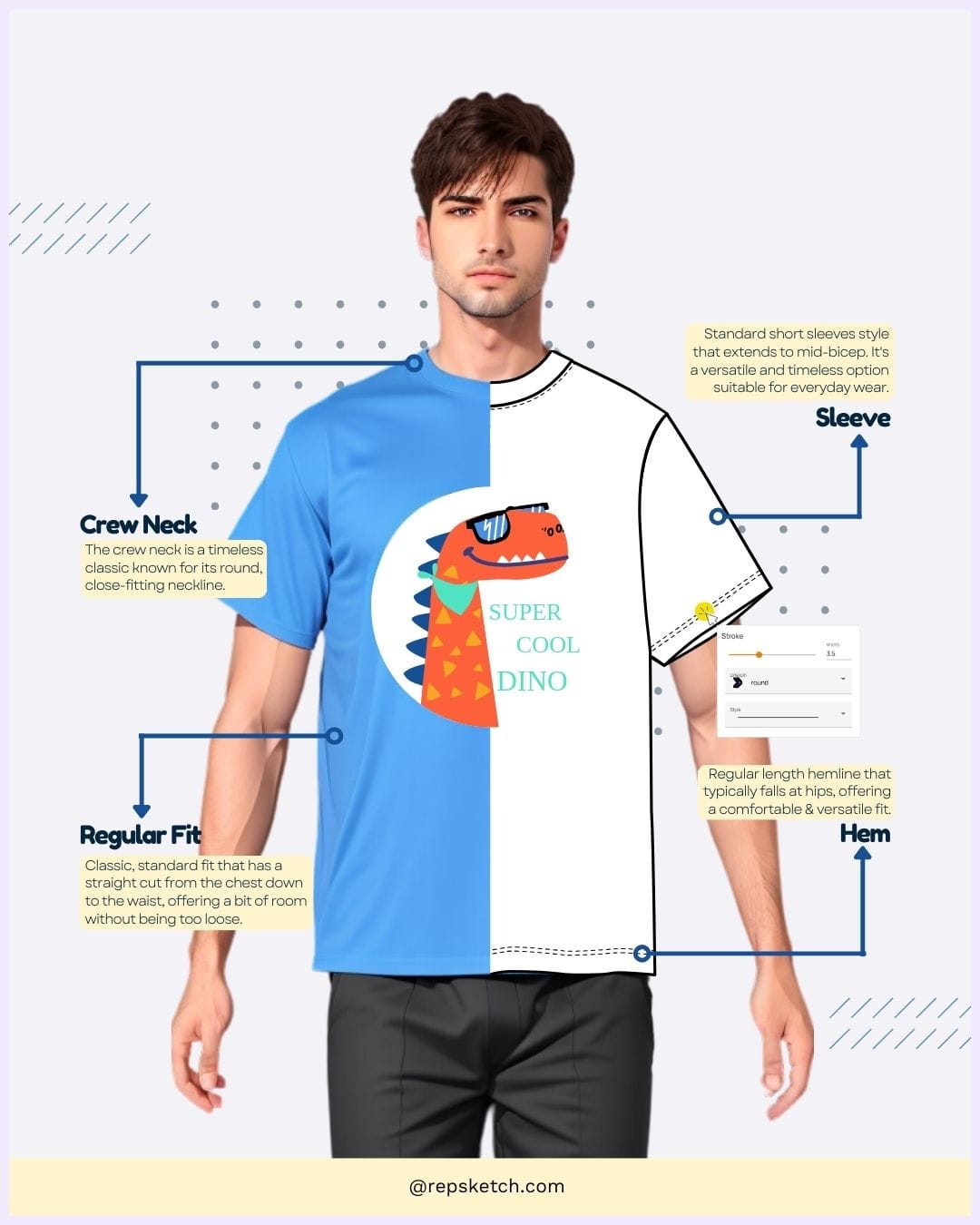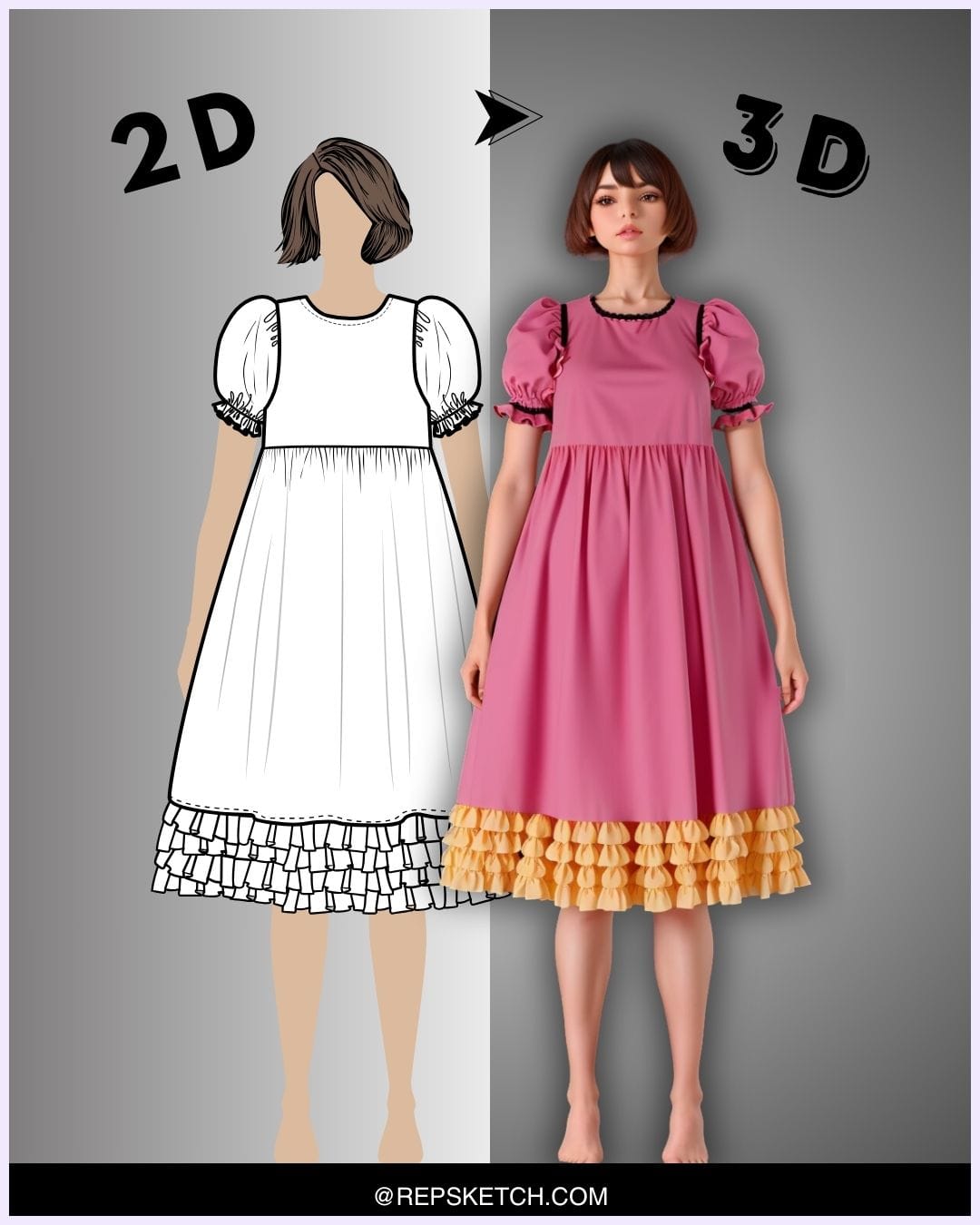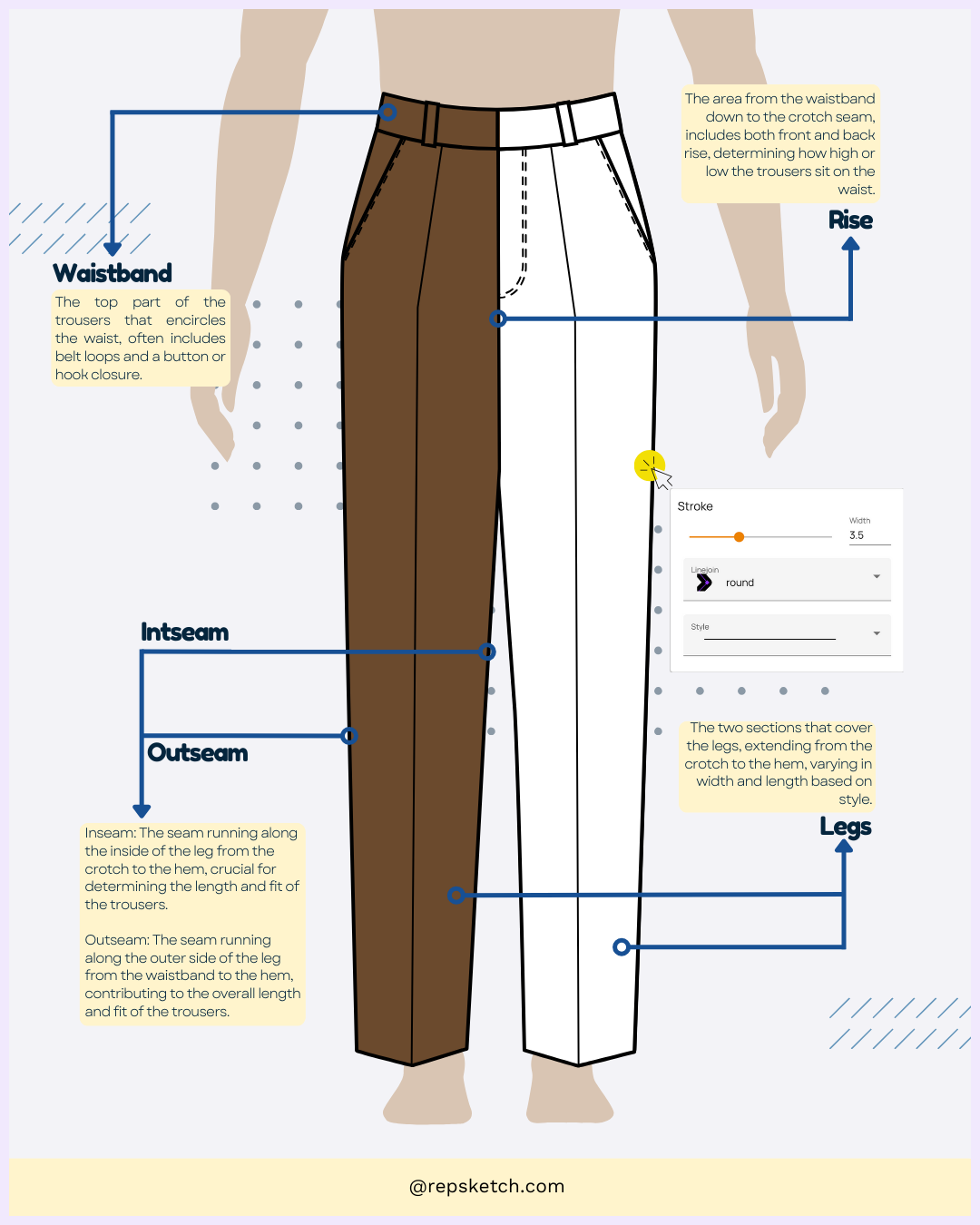Contents

Learning to draw fashion flats, also known as technical flats, is essential for any designer. These detailed sketches effectively communicate design ideas and ensure accurate garment production.
In this guide, you'll discover the key components of a flat sketch, essential tools, and tips for impeccable results. We'll also explore the benefits of digital tools over traditional methods for greater efficiency and sustainability. Whether you're new or experienced, mastering fashion flats will help bring your ideas to life with clarity and precision. Let's get started!
What is a technical flat?

A technical flat, also known as a flat sketch, is a detailed, two-dimensional line drawing of a garment. It showcases the design’s construction and features from a flat perspective, without any artistic styling or body form. Technical flats include precise details like seams, stitches, buttons, and zippers, providing a clear blueprint for manufacturers to follow.
History of technical flats

Technical flats originated in the 19th century to communicate garment details to tailors. The Industrial Revolution standardized patterns for mass production, and by the mid-20th century, fashion houses used refined technical flats for consistent garment production. Late 20th-century CAD tools like Adobe Illustrator enabled precise, scalable drawings. In the 21st century, digital tools streamlined flat creation, integrating 3D visualization and promoting sustainability. Current trends include collaborative platforms and technology-driven customization for bespoke garments.
Importance of fashion flats in the design process

Technical flats are crucial in fashion for clear communication, ensuring accurate production and reducing errors. They streamline production, save costs, and improve quality control with standardized, detailed documentation. Facilitating collaboration between designers and manufacturers, they enhance workflow and provide visual clarity, showing all essential details. Technical flats save time and demonstrate professionalism, essential for industry credibility.
Understanding the Basics of Fashion Flats

Fashion flats, also known as technical flats, are detailed two-dimensional drawings of garments that illustrate all design elements clearly and accurately. Their primary purpose is to provide a comprehensive blueprint for garment construction, ensuring that manufacturers can accurately reproduce the designer's vision.
Key components of a flat sketch include the garment's silhouette, seams, and details such as buttons and zippers. Common symbols and notations used in technical drawings include stitch lines, fold lines, and measurement indicators, all of which provide crucial information for pattern making and assembly.
Difference between flat sketch and illustration

While flat sketches and fashion illustrations both serve important roles in the fashion design process, they are fundamentally different.
A flat sketch, or technical flat, is a detailed, technical drawing that focuses on the construction and design elements of a garment. It is used primarily for manufacturing and pattern making, providing clear instructions on how to assemble the garment.
In contrast, a fashion illustration is a more artistic and stylized representation of the garment, often depicted on a figure to show how it will look when worn. Illustrations are used for marketing, presentations, and to convey the overall design concept and aesthetic.
Benefits of digital flats over hand-drawn flats

Digital flats offer several advantages over hand-drawn flats. Digital flats are precise and scalable, allowing designers to create accurate drawings that can be easily edited and modified. This flexibility makes it easier to make changes and updates without starting from scratch. Digital flats can also be shared and stored digitally, facilitating collaboration and reducing the need for physical storage space. Additionally, digital flats integrate seamlessly with other design software, streamlining the design process and improving efficiency. Hand-drawn flats, while traditional and tactile, require more time for revisions and cannot be as easily integrated into digital workflows.
Essential Tools for Digital Fashion Flats
Creating digital fashion flats requires the right tools and equipment. Recommended software includes Adobe Illustrator and Repsketch, both of which offer robust features for creating detailed and precise technical drawings.
In terms of hardware, a computer with sufficient processing power is essential to handle the software and large design files. Additionally, a graphic tablet is highly recommended for precision drawing and editing, as it allows designers to work more naturally and accurately compared to using a mouse.
Step-by-Step Guide to Drawing Digital Fashion Flats
- Outline the Basic Silhouette
- Use templates, shapes and paths to create the garment’s outline.
- Ensure accurate proportions and symmetry
- Add Structural Details
- Draw seams, darts, pleats, and panels
- Indicate closures like zippers, buttons, and hooks
- Include Design Elements
- Add pockets, collars, cuffs, and other details
- Illustrate or use templates for different types of sleeves and necklines
- Apply Colors, Textures, and Patterns
- Use fill and stroke tools to add color
- Importe and apply textures and patterns
- Final Touches
- Add stitch lines and fabric details
- Ensure all elements are clean and precise
Free community templates to get started
Explore our collection of free community templates to kickstart your design journey. Whether you're a beginner or seasoned designer, these templates offer a variety of styles contributed by our community members. Start creating with ease and inspiration, leveraging these ready-to-use resources tailored for fashion enthusiasts.
Tips for Achieving Professional-Looking Flats
Use vector tools for scalability and precision: To create professional-looking fashion flats, it's important to use vector tools for scalability and precision. Vector graphics allow for clean, crisp lines that can be scaled up or down without losing quality.
Maintain consistent line weights and styles: Maintaining consistent line weights and styles throughout your drawing helps to create a cohesive and polished look.
Utilize layers effectively to keep elements organized: Additionally, utilizing layers effectively can keep different elements of your design organized and make it easier to make adjustments as needed. This not only improves the overall appearance of your flats but also streamlines the editing process.
Exporting and Sharing Your Digital Flats
Best file formats for export (e.g., SVG, PNG, PDF): Commonly used formats include SVG, PNG, and PDF, each of which offers different advantages. SVG files are ideal for maintaining vector quality and scalability, while PNG files are great for web use due to their smaller file size. PDFs are widely used for sharing and printing because they preserve the layout and formatting of your design.
Optimizing file sizes for sharing and printing: To optimize file sizes for sharing and printing, ensure that your files are not overly large by compressing them if necessary.
Sharing your work with manufacturers and collaborators: Sharing your work with manufacturers and collaborators can be done through email, cloud storage, or collaborative platforms like Repsketch that allow for real-time feedback and adjustments.
Common Mistakes to Avoid
Overcomplicating the design: When creating fashion flats, it's important to avoid overcomplicating the design. Keeping your flats simple and clear ensures that they are easy to understand and follow.
Ignoring the importance of accuracy and proportions: Accuracy and proportions are also crucial; any discrepancies can lead to errors in the final garment.
Failing to use consistent symbols and notations: Consistency in symbols and notations is essential for clear communication, so make sure to use standard symbols and keep them uniform throughout your drawings.
Resources for Further Learning
To further enhance your skills in creating digital fashion flats, there are many valuable resources available. Engaging with these resources can help you continuously improve your design skills and stay competitive in the fashion industry.
Online tutorials and courses: Online tutorials and courses can provide step-by-step guidance and practical tips.

Books on digital fashion design: Books on digital fashion design offer in-depth knowledge and insights from industry experts.
Communities and forums for feedback and inspiration: Joining communities and forums can be beneficial for receiving feedback, finding inspiration, and staying updated with the latest trends and techniques.
Ask our community on Repsketch if you have questions-

Repsketch boasts a vibrant community of designers who contribute their sketches to the Repsketch library. This collaborative environment allows designers to share their work, seek feedback, and discuss queries through the comments section under each sketch. Whether you're looking for inspiration, need help with a specific design challenge, or want to connect with fellow designers, the Repsketch community is a valuable resource. Engage with community members, share your experiences, and learn from others to enhance your design process and skills.
